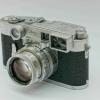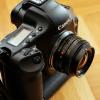FILCA A, B and C, Where's D
-
Recently Browsing 0 members
- No registered users viewing this page.
-
Similar Content
-
Guess where
By jaapv,
- 9 replies
- 394 views
-
- 3 replies
- 368 views
-
- 3 replies
- 343 views
-
- 199 replies
- 23,175 views
-
O sister, where art though?
By Guest,
- 1 reply
- 220 views
-






Recommended Posts
Join the conversation
You can post now and register later. If you have an account, sign in now to post with your account.
Note: Your post will require moderator approval before it will be visible.